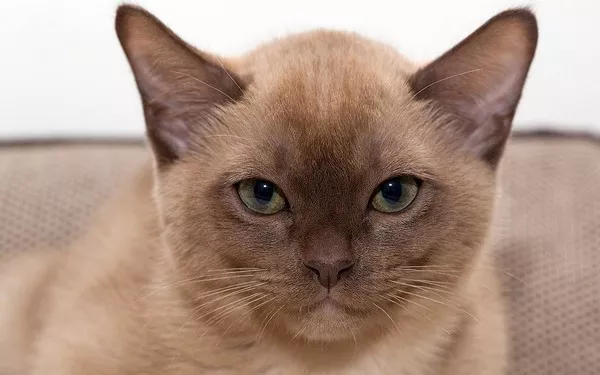Burmese cats are known for their affectionate nature, striking looks, and playful personalities. They are a popular choice among cat enthusiasts for their charming and social demeanor. However, like any breed, Burmese cats come with their own set of challenges. This article explores the cons of owning a Burmese cat, providing a comprehensive understanding for prospective owners.
Health Concerns
Genetic Predispositions
Burmese cats are prone to certain genetic health issues. One significant concern is the breed’s predisposition to cranial deformities. These deformities, often referred to as “Burmese head defect,” can lead to serious health problems, including neurological issues. Additionally, Burmese cats can be susceptible to a condition known as hypokalemic polymyopathy, a genetic disorder that affects muscle function, leading to weakness and muscle pain.
Obesity and Diabetes
Burmese cats have a tendency to gain weight easily. Their love for food, combined with a generally sedentary lifestyle, makes them prone to obesity. Obesity in Burmese cats can lead to a myriad of health issues, including diabetes. Diabetes in cats can be challenging to manage and often requires lifelong treatment with insulin, dietary changes, and regular veterinary check-ups.
Respiratory Issues
The brachycephalic nature of Burmese cats, characterized by their short, flat faces, can lead to respiratory issues. These cats may experience difficulties breathing, particularly in hot weather or during physical exertion. Owners must be vigilant about their cat’s respiratory health and provide a comfortable, stress-free environment to mitigate these risks.
Behavioral Challenges
High Energy Levels
Burmese cats are known for their high energy levels. While this makes them fun and engaging pets, it can also be challenging for owners who may not have the time or energy to keep up with their activity needs. These cats require plenty of mental and physical stimulation to prevent boredom and associated behavioral problems.
Attention Demands
Burmese cats are extremely social and crave constant attention. They form strong bonds with their human companions and can become anxious or depressed if left alone for long periods. This demand for attention can be overwhelming for some owners, particularly those with busy lifestyles or who travel frequently.
Destructive Behavior
Due to their playful and inquisitive nature, Burmese cats can sometimes engage in destructive behavior if not adequately stimulated. They may scratch furniture, chew on household items, or knock things over in their quest for entertainment. Providing appropriate outlets for their energy, such as scratching posts and interactive toys, is essential to mitigate these behaviors.
Grooming and Maintenance
Shedding
Although Burmese cats have short coats, they shed more than one might expect. Regular grooming is necessary to keep their coat in good condition and to minimize shedding around the home. This can be a time-consuming task, particularly during seasonal shedding periods.
See Also: What Breeds Make Up a Burmese Cat?
Dental Health
Burmese cats are prone to dental issues, including gingivitis and periodontal disease. Regular dental care, including brushing their teeth and providing dental treats or toys, is crucial to maintaining their oral health. Dental problems can be painful for the cat and expensive to treat if they progress to a more severe stage.
Ear Cleaning
Burmese cats can be prone to ear infections, particularly if their ears are not kept clean. Regular ear cleaning is necessary to prevent the build-up of wax and debris, which can lead to infections. This can be an additional maintenance task that some owners may find challenging to keep up with.
Environmental and Lifestyle Considerations
Indoor vs Outdoor
Burmese cats are generally best kept as indoor pets. Their friendly and trusting nature can make them more vulnerable to dangers if allowed to roam outdoors. This includes risks from traffic, other animals, and potential theft. However, keeping a Burmese cat indoors means ensuring their environment is enriched and stimulating to prevent boredom and associated behavioral issues.
Space Requirements
While Burmese cats do not require as much space as some larger breeds, they still need enough room to play and explore. A cramped living environment can lead to stress and behavioral problems. Prospective owners need to ensure they have adequate space to accommodate a Burmese cat’s active lifestyle.
Allergies
Burmese cats, like all cats, produce allergens that can affect people with cat allergies. Their short coat can still shed dander, which is a common allergen. Potential owners with allergies should spend time around Burmese cats before deciding to adopt one to ensure they can tolerate the allergens.
Conclusion
While Burmese cats are undoubtedly charming and affectionate companions, they come with their own set of challenges. From genetic health concerns to high energy levels and maintenance requirements, prospective owners must carefully consider these factors before bringing a Burmese cat into their home. Understanding these cons will help ensure that the decision to adopt a Burmese cat is well-informed and that both the cat and the owner can enjoy a harmonious and fulfilling relationship.
Related Topics:


























